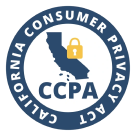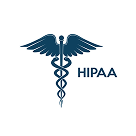HIPAA Verification Requirements: PHI Security & Compliance

Healthcare communication faces unprecedented security challenges. In 2023, healthcare data breaches shattered previous records –725 incidents exposed a staggering 133 million patient records, marking a 156% increase from 2022.*
Even more concerning, 67% of these breaches involved compromised medical information, often stemming from inadequate verification procedures and unsecured communications.*
Each day, healthcare providers walk a tightrope between accessibility and security. With patient calls, virtual consultations, and remote care becoming the norm, proper HIPAA verification isn’t just about compliance – it’s about protecting patients from increasingly sophisticated data theft attempts.
The stakes are high. A single verification oversight can trigger fines of up to $50,000 per incident. Yet the real cost extends beyond financial penalties to damaged patient trust and compromised care quality.
Key takeaways
- Verification procedures are your first line of defense against the rising tide of healthcare data breaches – with 133 million records exposed in 2023, proper identity confirmation before sharing PHI is non-negotiable.
- HIPAA-compliant phone systems and secure communication channels form the foundation of protected patient information exchange, helping prevent 67% of breaches that involve compromised medical data.
- Consistent documentation of all verification attempts not only ensures compliance but also protects healthcare organizations from penalties that can reach $50,000 per incident.
What is HIPAA Verification?
HIPAA verification requirements establish protocols for confirming identity before sharing protected health information. These safeguards ensure that sensitive healthcare data reaches only authorized individuals through HIPAA-compliant phone calls and other communication channels.
Healthcare providers must verify the identity of anyone requesting patient information – whether it’s the patients themselves, their representatives, or other healthcare professionals.
This verification process forms a crucial part of HIPAA security rules and helps prevent unauthorized access to sensitive data.
What is Protected Health Information (PHI)?
Protected Health Information encompasses any individually identifiable health data that healthcare providers, insurers, or their business associates create, receive, maintain, or transmit.
This definition shapes HIPAA identity verification requirements and determines what information needs protection.
Examples of PHI include:
- Medical records and lab results
- Insurance information and billing records
- Appointment details and scheduling data
- Prescription information
- Medical device identifiers
- Biometric identifiers
Please note that not all health information qualifies as PHI. For instance, step-count data from a personal fitness tracker or heart rate readings from a consumer smartwatch typically fall outside HIPAA guidelines for telephone communications and other PHI protection requirements.
Secure HIPAA-Compliant Calling – Start Your 14-Day Free Trial!
Why is HIPAA Identity Verification Important?
HIPAA identity verification serves as the first line of defense against data breaches and unauthorized access to patient information. Without proper verification, healthcare organizations risk exposing sensitive data and facing severe penalties under HIPAA calling rules.
Data Security Proper verification protocols protect against social engineering attempts and identity theft. Healthcare organizations handle vast amounts of sensitive information through HIPAA call centers and other communication channels. One verification failure could compromise entire patient records. Implementing security questionnaire automation enhances this process by streamlining verification and ensuring more accurate and timely assessments of security risks.
Compliance and Financial Stakes HIPAA verification guidelines exist to protect both patients and providers. Healthcare organizations that fail to verify identities properly can face:
- Fines up to $50,000 per violation
- Mandatory corrective action plans
- Potential criminal charges
- Loss of patient trust
- Damage to professional reputation
Beyond regulatory requirements, robust verification processes support efficient operations. When staff follow clear HIPAA validation procedures, they can confidently handle patient inquiries while maintaining security. This balance between accessibility and protection defines modern healthcare communication.
HIPAA Verification Requirements and Best Practices
Here’s a scenario healthcare facilities could face: A doctor receives an urgent call from someone claiming to be a patient’s spouse, requesting sensitive test results. Without proper verification protocols, this seemingly innocent request could lead to a serious HIPAA violation.
Another healthcare provider faces a $50,000 fine after staff shared medical information with an impersonator who knew just enough personal details to seem legitimate.
Scenarios like these highlight why robust verification procedures form the backbone of HIPAA compliance. Healthcare providers must implement specific verification steps before sharing any protected health information, whether through HIPAA-compliant phone calls or in-person interactions.
Required Verification Elements
- Personal identifiers (name, date of birth, address)
- Healthcare-specific identifiers (medical record numbers, patient IDs)
- Government-issued identification when appropriate
- Authentication questions based on patient records
- Documentation of all verification attempts
CloudTalk helps healthcare providers meet these requirements through built-in verification workflows and secure HIPAA phone system features. The platform automatically prompts staff to complete necessary verification steps before accessing patient information.
Implementation Best Practices
- Use multi-factor authentication for all access points
- Implement role-based access controls
- Maintain detailed verification logs
- Regular staff training on verification procedures
- Secure storage of verification documentation
For telephone interactions, verifying patient identity over the phone requires additional safeguards. Healthcare organizations must:
- Confirm caller identity using multiple data points
- Document verification attempts
- Use secure communication channels
- Follow minimum necessary disclosure principles
Modern HIPAA verification guidelines emphasize both security and efficiency. Solutions like CloudTalk streamline these requirements while maintaining strict compliance with HIPAA security rules.
Minimum Verification Requirements
Healthcare providers must establish a baseline verification protocol that meets HIPAA identity verification requirements. The foundation includes:
- Primary identifiers: Full name and date of birth
- Secondary verification: One additional identifier
- Phone number
- Address
- Medical record number
- Insurance ID
- Relationship verification for all requesters
- Written/verbal authorization documentation
These requirements form the core of HIPAA validation procedures across all communication channels.
Verification for Different Requesters
Different requesters require varying levels of verification under HIPAA verification guidelines:
Patients:
- Name and DOB verification
- Secondary identifier confirmation
- Recent treatment details when needed
Legal Representatives:
- Valid legal documentation
- Power of attorney verification
- Guardian certification checks
Third-Party Entities:
- Signed HIPAA authorization forms
- Professional credentials verification
- Entity legitimacy confirmation
Law Enforcement:
- Valid subpoena review
- Court order verification
- Badge/credential checks
Verification When Disclosing PHI Over the Phone
Phone verification requires robust technology and clear protocols. CloudTalk’s HIPAA phone system streamlines this process through:
- Multi-point verification workflows
- Automated identity checks
- Secure call recording
- Documentation trails
Standard verification procedures include:
- Three-point identification check
- Security question verification
- Callback verification using registered numbers
- Real-time documentation of verification steps
In-Person HIPAA Identity Verification
Face-to-face verification requires:
- Government ID verification
- Photo matching
- Medical record cross-reference
- Biometric verification when available
Modern healthcare facilities increasingly use digital solutions to enhance traditional verification methods:
- Electronic ID scanning
- Digital signature verification
- Biometric authentication systems
- Real-time database checks
Identity Verification for Third-Party Requests
Third-party verification demands extra scrutiny:
Documentation Requirements:
- Signed HIPAA authorization
- Dated within one year
- Specific purpose stated
- Scope of disclosure defined
Credential Verification:
- Professional license checks
- Organization validation
- Authority confirmation
Secure Communication:
- Encrypted channels
- Verified contact methods
- Documented disclosure trails
Make Your Phone System HIPAA-Compliant With CloudTalk
When Verification is NOT Required
A trauma patient arrives in the emergency room, unconscious and in critical condition. The attending physician needs immediate access to medical history. Meanwhile, public health officials require urgent notification about a possible infectious disease case.
In these crucial moments, standard HIPAA verification requirements take a back seat to patient care and public safety.
Healthcare providers often face situations where rigid identity verification could hinder essential care or public health responses. In specific scenarios, HIPAA security rules provide carefully defined exceptions that balance privacy protection with practical healthcare needs.
Treatment, Payment, and Operations
- Healthcare providers can share PHI with other providers for treatment purposes.
- Insurance companies can receive the necessary information for claims processing.
- Staff can access records needed for quality assessment Example: A specialist can receive patient records from a primary care physician without additional verification steps.
Public Health Emergencies
- Reporting infectious diseases to health authorities
- Notifying public health agencies about exposure risks
- Sharing information during natural disasters (ex., disease outbreak), healthcare facilities can report cases to the CDC without patient authorization.
Legal Requirements
- Valid court orders supersede standard HIPAA verification requirements
- Mandatory reporting for abuse or neglect cases
- Law enforcement emergencies involving immediate threats For these situations, HIPAA-compliant phone calls can proceed with modified verification protocols.
Facility Directories
- Basic location information within healthcare facilities
- General condition updates (stable, critical, etc.)
- Religious affiliation for clergy visits Unless patients specifically opt out, hospitals can share this limited information without full HIPAA validation procedures.
HIPAA-Compliant Methods for Patient Verification
Imagine a bustling medical clinic where a nurse receives three back-to-back requests for patient information: a video call from a patient requesting test results, an email from an insurance company, and a relative at the front desk asking about treatment details.
Each scenario demands a different verification approach while maintaining HIPAA compliance.
Modern healthcare providers must navigate this complex landscape of verification methods, balancing security with accessibility. From traditional face-to-face checks to advanced biometric systems, each method serves a specific purpose in the verification toolkit.
Traditional Methods
Knowledge-Based Authentication
- Demographic verification
- Medical history confirmation
- Insurance information validation CloudTalk’s HIPAA phone system streamlines these checks through automated verification workflows.
Face-to-Face Verification
- Government ID checks
- Photo matching
- Signature verification These methods remain crucial for initial patient registration and sensitive information requests.
Secure Phone Verification
- Multi-step authentication protocols
- Callback verification
- Security question validation HIPAA-compliant phone calls require robust verification to prevent unauthorized access.
Digital and AI-Driven Verification Solutions
Electronic Identity Verification (eIDV)
- Real-time database checks
- Document validation
- Digital signature verification Modern HIPAA verification requirements increasingly embrace these efficient digital solutions.
Biometric Authentication
- Fingerprint scanning
- Facial recognition
- Voice authentication These advanced methods enhance HIPAA validation while improving user experience.
Secure Patient Portals
- Two-factor authentication
- Encrypted access
- Audit trail creation Portals integrated with HIPAA-compliant telemedicine software provide secure, convenient access.
Secure, compliant phone systems starting at $19/month
Common HIPAA Verification Mistakes to Avoid
A metropolitan hospital recently faced a $250,000 fine after staff shared medical records with a fraudster who simply knew a patient’s birthday and address. Another clinic discovered their call center accidentally exposed PHI through unsecured phone lines. These costly mistakes share a common thread: inadequate verification protocols.
Here are the critical verification errors healthcare providers must avoid:
Insufficient Identity Verification
- Accepting single-factor identification
- Skipping secondary verification steps
- Relying solely on basic identifiers like birth dates
- Not implementing multi-factor authentication protocols Secure phone systems help standardize verification procedures across all patient interactions.
Unsecured Communication Channels
- Using non-HIPAA compliant phone systems
- Sharing PHI through unencrypted messages
- Failing to implement proper access controls Healthcare providers need HIPAA-compliant phone calls through secure platforms like CloudTalk to prevent data breaches.
Poor Documentation Practices
- Missing verification attempt records
- Incomplete authorization documentation
- Inconsistent verification procedures Without proper documentation, organizations can’t prove HIPAA validation compliance during audits.
Inadequate Staff Training
- Inconsistent verification protocols
- Lack of emergency procedure knowledge
- Unfamiliarity with HIPAA security rules Regular training and clear protocols help prevent these common verification mistakes.
Technology Gaps
- Outdated phone systems without security features
- Missing audit trail capabilities
- Lack of integrated verification tools Modern HIPAA phone systems bridge these gaps with built-in compliance features.
Consequences of Non-Compliance with HIPAA Verification Rules
A California medical group learned this lesson the hard way.* After failing to properly verify callers’ identities, they exposed sensitive patient information to unauthorized parties.
The result? A $200,000 fine, mandatory corrective action, and devastating media coverage that took years to overcome.
Here’s a handy table with the consequences of not complying:
Type of Impact
Immediate Consequences
Long-Term Effects
Potential Costs
Legal
Immediate fines ($100-$50,000 per violation), Mandatory corrective actions, Criminal charges possible
Extended regulatory oversight, Regular compliance audits, Restricted operations
Up to $1.5 million annually per violation type
Reputational
Negative media coverage, Patient trust loss, Required breach notifications
Reduced patient acquisition, Damaged community standing, Lost partnerships
Marketing and PR recovery costs often exceed $100,000
Operational
Mandatory system upgrades, Emergency staff training, Process restructuring
Increased compliance costs, Higher administrative burden, Stricter oversight requirements
$10,000-$100,000 in immediate remediation costs
Business
Lost contracts, Insurance premium increases, Patient exodus
Reduced market share, Limited growth opportunities, Higher operating costs
20-30% revenue loss in first year
How to Ensure Your Organization is HIPAA Compliant
A midwest medical clinic transformed its verification practices after a near-miss: a caller almost accessed sensitive patient data by simply mentioning a few personal details found on social media.
This wake-up call led them to completely redesign their compliance approach. Their journey offers a blueprint for healthcare organizations aiming to strengthen their verification protocols.
The path to HIPAA compliance requires systematic implementation. Here’s how to structure your verification processes:
Initial Setup (First 30 Days):
- Assess current practices and gaps
- Select HIPAA-compliant phone systems
- Create verification policies
- Configure secure workflows
Implementation (60-90 Days):
- Deploy secure communication tools
- Train staff on procedures
- Set up audit systems
- Test verification protocols
Ongoing Maintenance:
- Monthly compliance checks
- Regular staff training updates
- Technology performance reviews
- Automated security testing
- Process refinements as needed
Building Trust Through Privacy Protection With CloudTalk
Breaches erode patient trust, leading to lost business and long-term reputational harm. Memorial Hermann Health System faced public backlash after leaking a patient’s name in a press release. This single verification failure transformed a trusted healthcare provider into a cautionary tale.
Proper HIPAA verification serves as more than a compliance checkbox—it’s a cornerstone of patient relationships. Each verification step, from identity confirmation to secure documentation, demonstrates commitment to patient privacy. Healthcare providers who prioritize these protocols protect both their patients and their organization’s future.
The path forward requires healthcare providers to embrace verification as an essential part of care delivery. Those who do will build lasting patient trust in an era where privacy matters more than ever.
Experience CloudTalk First-Hand
Source:
FAQs
What needs to be verified for HIPAA compliance?
Healthcare providers must verify identity using three points: full name, date of birth, and an additional identifier like medical record number or address.
What are the three important rules for HIPAA compliance?
The Privacy Rule, Security Rule, and Enforcement Rule form HIPAA’s core requirements for protecting patient information and enforcing compliance.
What is the HIPAA authentication rule?
The authentication rule requires healthcare providers to verify the identity of anyone requesting PHI before sharing any protected health information.
What are the requirements for HIPAA compliance?
Key requirements include secure patient data handling, staff training, proper verification protocols, documentation of all PHI access, and breach notification procedures.
Which two pieces of information should be used to identify a patient?
At minimum, providers must verify full name and date of birth, though best practice requires a third identifier for complete verification.
What information should be verified or obtained during the check-in process?
Verify name, DOB, address, insurance information, photo ID, and emergency contacts. Update any changed information in patient records.





















